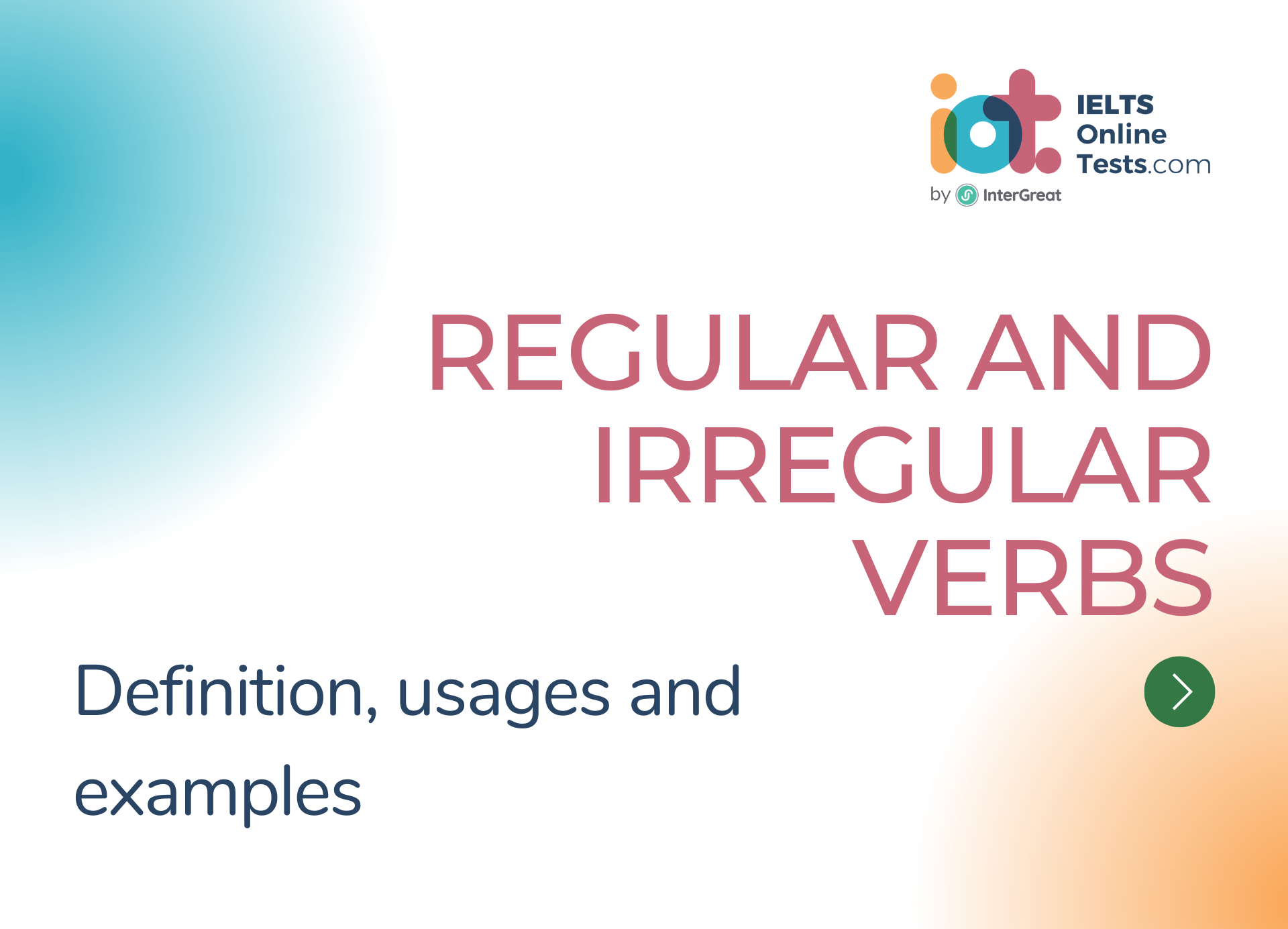
Regular and Irregular Verbs
Regular and irregular verbs are two categories of verbs based on how they form their past tense and past participle forms. Here's a detailed explanation of regular and irregular verbs:
REGULAR VERBS
Regular verbs are a category of verbs that follow a predictable pattern for forming their past tense and past participle forms. They are called "regular" because they adhere to a regular or systematic rule of adding "-ed" or "-d" to the base form of the verb. Here's a detailed explanation of regular verbs:
Formation of Past Tense and Past Participle:
- To form the past tense of regular verbs, add "-ed" or "-d" to the base form of the verb.
- To form the past participle of regular verbs, also add "-ed" or "-d" to the base form of the verb.
- The specific ending ("-ed" or "-d") is determined by the last sound of the base form.
Examples of Regular Verbs:
Base Form Past Tense Part Participle talk talked talked play played played walk walked walked love loved loved jump jumped jumped Formation Guidelines:
- For most regular verbs, add "-ed" to the base form to form the past tense and past participle.
- If the base form ends in "e," simply add "-d" to form the past tense and past participle.
- If the base form ends in a single consonant preceded by a single vowel, double the final consonant before adding "-ed" to form the past tense and past participle.
- Examples:
Base Form Past Tense Part Participle like liked liked stop stopped stopped admit admitted admitted
Regular Verb Usage:
- Regular verbs are used in a variety of tenses to indicate actions or states that occur in the past, present, or future.
- Example:
- "She talked to her friend yesterday."
By understanding the rules for regular verb formation, you can easily construct the past tense and past participle forms of regular verbs. Regular verbs are widely used in English, and recognizing their patterns assists in accurate and consistent verb usage throughout your writing and speech.
IRREGULAR VERBS
Irregular verbs are a category of verbs that do not follow the regular pattern of adding "-ed" or "-d" to the base form to form the past tense and past participle. Instead, they have unique and often unpredictable forms that need to be memorized individually. Here's a detailed explanation of irregular verbs:
Formation of Past Tense and Past Participle:
- Irregular verbs have unique forms for the past tense and past participle, which do not follow a consistent pattern.
- The past tense and past participle forms of irregular verbs are not formed by adding "-ed" or "-d" to the base form.
Examples of Irregular Verbs:
Base Form Past Tense Part Participle go went gone be was/were been eat ate eaten write wrote written take took taken Memorization of Irregular Verbs:
- Unlike regular verbs, irregular verbs do not follow a set pattern, so their past tense and past participle forms need to be learned individually.
- It is helpful to create a list of common irregular verbs and their corresponding past tense and past participle forms for reference and practice.
Irregular Verb Usage:
- Irregular verbs are used in various tenses to indicate past actions, present conditions, and future possibilities.
- Example:
- "He went to the store yesterday."
Understanding and memorizing irregular verbs is essential for accurate verb usage in English. Since their forms do not follow a predictable pattern, it is important to familiarize yourself with common irregular verbs and their associated past tense and past participle forms. Practice and exposure to these verbs will help you use them correctly in sentences and communicate effectively.




